Sound Sculptures
Wednesday, 16th January 2013 by Ian Brown
While most visual artwork is intended to please the eye, some artists strive to reach the other senses as well. Some of them create large-scale sculptures which create sounds from natural sources - generally wind or water. Our first example is the Blackpool High Tide Organ.
Blackpool has been a popular English tourist destination since the mid-18th century, but has traditionally been known for donkey rides and 'kiss me quick' hats. The 15m (49ft) tall Blackpool High Tide Organ sets a much more sombre tone however, creating mournful tones from the motion of waves. In the hours around high tide, sea water enters 8 pipes along the shore and pumps air through 18 organ pipes in the structure, as shown in this video.
The High Tide Organ was created by artists Liam Curtin and John Gooding in 2002. While Street View gives us a nice silhouette of the steel, zinc and copper sculpture, Bing has a better aerial view.
Less than an hour to the east, the Singing Ringing Tree stands high on the moors above Burnley, and is just visible on Street View.
This 3m (10ft) collection of steel pipes uses the wind (plentiful at this elevation) to create a wide range of haunting sounds, as demonstrated in this video. It was created by Mike Tonkin and Anna Liu in 2006 as part of a series of four large-scale environmental artworks across East Lancashire. Its name was taken from a German film for children from the 1950s.
Moving to America's west coast, the San Francisco Wave Organ is another wave-powered sound sculpture. It was built in 1986 by Peter Richards and George Gonzales. While it is on a small jetty near the Golden Gate Bridge and Alcatraz, it is part of the Exploratorium, a nearby science museum.
Instead of the organ-type sounds of Blackpool's sculpture, this installation creates more percussive and watery sounds which reverberate through 25 pipes throughout the site, which was created using large pieces of carved marble salvaged from a dismantled cemetery. Learn more at the Wave Organ's official site, and in a pair of videos: one, two.
Back to Europe and another sculpture that uses the wind to create sound - the Sibelius Monument in Helsinki. The sculpture is located in a park also named for Jean Sibelius who was one of Finland's most famous composers. Smaller versions are found at the UN building in New York and the UNESCO building in Paris, though I was not able to locate either on Google Maps. The sculpture resonates quietly in the strong sea breezes.
The 24-ton artwork was built by artist Eila Hiltunen in 1967 from more than 600 textured steel tubes connected in an abstract pattern, which Bing's bird's eye view gives us a good look at. Hiltunen developed asthma as a result of the toxic fumes created by the welding process, and faced intense public scrutiny for a sculpture dedicated to such a famous figure. Today however, the monument is immensely popular and visited by thousands of tourists each year.
Now to Zadar, Croatia, where cruise ship passengers are greeted by the Sea Organ, a wave-powered installation near the dock.
After the second world war, the damaged sea-front was repaired with bleak concrete walls. Recently, efforts have been made to beautify the area for visitors, with the installation of white marble steps. The Sea Organ was create by Nikola Bašić and consists of numerous pipes beneath the steps, which produce harmonic sounds with the movement of the waves. At night the music is accompanied by colourful lights embedded in the steps, as shown in this video.
Finally, not all sound sculptures rely on mother nature, but need human intervention to create music. One example is the Hydraulophone or Funtain, at the Ontario Science Centre in Toronto. It was not operating when Street View drove by, but this video shows how it works.
If you know of other sound sculptures, please post links in the comments!



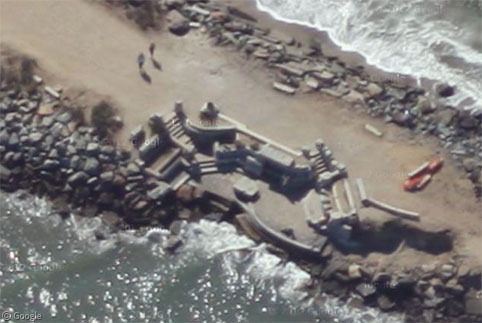



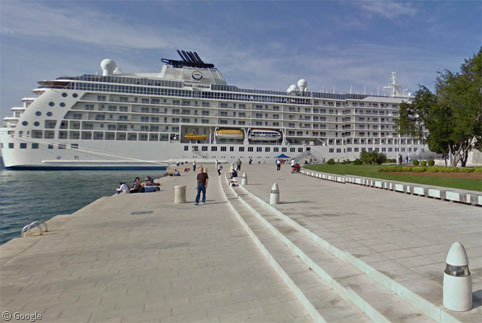
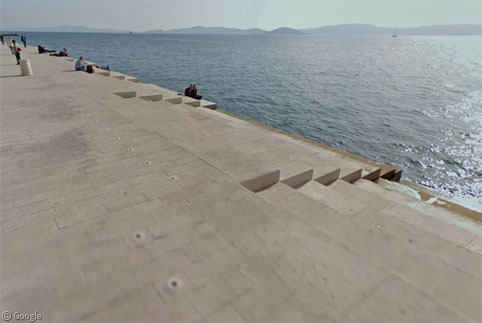

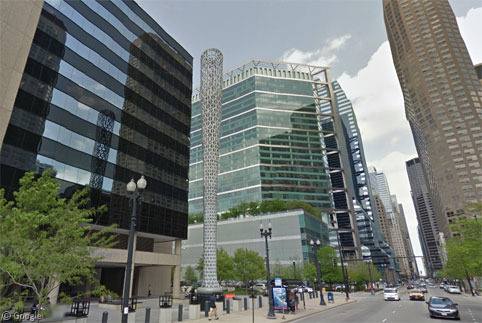


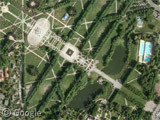
There have been a series of “Wind Organs” at the end of the Nollendijk in Vlissingen, The Netherlands. Read about it here (in Dutch): http://nl.wikipedia.org/wiki/Windorgel_Vlissingen
I forgot to mention that there has been a Wind Organ in Vlissingen since the early 1970’s making it earlier than most of the installations mentioned in the article above.
Neat post! There is the ‘Sounding Sculpture’ by Harry Bertoia on the plaza in front of Chicago’s Aon Center. http://goo.gl/maps/Z4vD8
http://chicago-outdoor-sculptures.blogspot.com/2007/11/sounding-sculpture.html
This the video about Harry Bertoia: Untitled Sound Sculpture
In Switzerland’s Toggenburg region, there’s the “Klangweg”, a whole array of sound installations that invite hikers to play with them. Very popular with kids! http://www.klangwelt.ch/klangweg.html
I don’t know where but I like and
Thanks for the links everybody, they’re great!
The Kvarnofon in Harplinge in Sweden. http://www.harpartlab.se/kvarnofon1.html